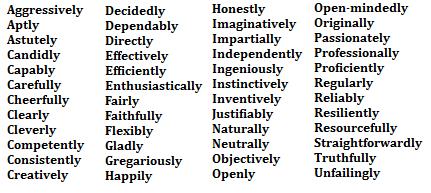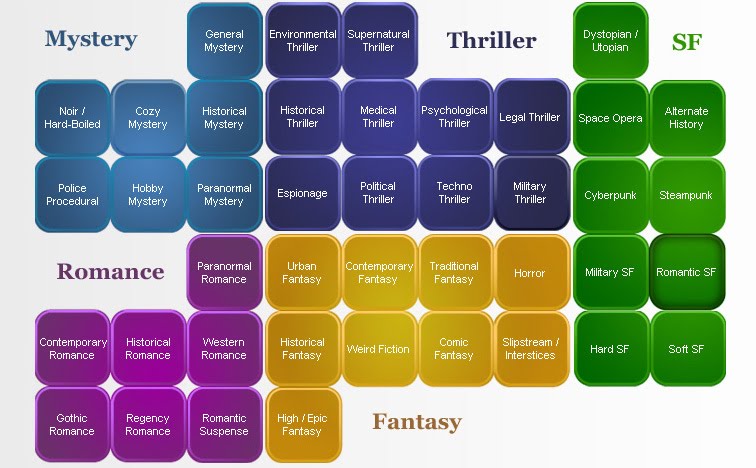Sample Comments (What to look for and how to sample comments)
What to Do
|
WHAT NOT TO DO
|
Sensory
Description of the event is in the moment, slow motion, detailed... (walking past the window, I see….)
Description of people & places are included
Description includes emotional experience
|
Description of the moment is only in simple past tense
I walked in the door and was afraid.
Description is limited
Description can be more visual, sensory
|
Dialogue, correctly punctuated
“And then I realized (sigh) that he lied to me.”
“Without the truth... ” my friend, Matt, shook his head, “I don’t think we can save him.”
I cocked my head and realized with horror that I might have to leave HIM for good. “Yeeeesss,” I slowly agreed as if a robot had taken control of my brain.
|
Incorrectly punctuated dialogue.
I told my friend I would have to leave him. My friend agreed with me. He said, “without the truth, I don’t think we can save him.” I agreed. “Yes”
|
Lively Language
.
|
|
Reflection
I remember
In hindsight
Thinking now about the event
Reflection is strong because its layered throughout the memoir more than once
|
Reflection is thoughtful, but only mentioned once at the end
Reflection is limited or nonexistent
|
Editing is strong
Grammar is consistent
Spelling and sentences are complete
The scenes are paragraphed whenever the topic switches, people switch talking, scene or time changes
|
The paper has many mistakes
Grammar is inconsistent (I walked down the street and saw my grandfather. Walking up to him, I said I wanted to go with him.)
Spelling errors
Sentences have run - ons or are incomplete
Little or no paragraphing
|
Structure is clear and easy to follow
|
Structure and organization is confusing
|
I want to read more because I am curious about this event
|
I want to read more because I don’t know enough or am confused by the information given
|
Sample Memoirs
Italian Journey
The Plane Ride
A confrontation
Memoir Rubric You should have a completed rough draft by Friday 10 / 6
and a polished final draft by Monday 10 / 9
This week we will begin adding and revising to our memoir.
Monday - Add Dialogue and Explode a moment to your memoir
Tuesday - Add reflection
Wednesday - check to see if you have enough paragraphing
Dialogue Quiz
Words to use instead of said
Exploding a Moment
Reflection
Reflection stu.sandi.net sign in
Rules of Paragraphing
Today, we will begin writing a final memoir that responds to the following prompt
As we go through life we all have experiences that shape us, teach us, or show us who we are. What has life taught you? How have you learned those lessons? Who has impacted your life the most? These are the moments that become memoirs, the emotions that shape our personalities and the realizations that shape our opinions.
Write about an event in your life that has shaped you as a person, taught you something, or showed you how things really are.
Word Count: 700 - 1000 words
Begin Writing your 3rd / final memoir. You should have a rough draft by Friday.
Include: Dialogue with
- Dialogue Tags (description of physical action around the dialogue. Information about speakers actions, facial expressions, movements, feelings or other character's reactions, emotions)
Use Dialogue Tags / Beats to show emotion A beat is a description of a physical action that falls between lines of dialogue. It aids the reader in “seeing” the scene.
"How do you not know this?" I ask.
I look at them like they're stupid. "How do you not know this?"
Use Contractions: people say “don’t” instead of “do not,” unless emphasizing
“Timmy, don’t touch the skunk, I warned”
Begin Writing your 3rd / final memoir. You should have a rough draft by Friday.
Rules for Dialogue
- Use quotation marks “ ” to show the characters’ own words.
- Always begin a new paragraph when the speaker changes.
- Use commas to separate most quotations from the rest of the sentence.
- The punctuation in dialogue is always inside of the quotation marks.
Include: Dialogue with
- Dialogue Tags (description of physical action around the dialogue. Information about speakers actions, facial expressions, movements, feelings or other character's reactions, emotions)
Use Dialogue Tags / Beats to show emotion A beat is a description of a physical action that falls between lines of dialogue. It aids the reader in “seeing” the scene.
"How do you not know this?" I ask.
I look at them like they're stupid. "How do you not know this?"
Facial Expressions: “And a place in Beverly Hills.” She cocks her eyebrow.
Movement: “Be there or Be-ware!” she said, and slammed the phone down. (243) – Dead End in Norvelt.
Use adverbs "What do you mean?" I asked warily.
"I mean you're grounded," she said forcefully. It was at this moment when….


"I mean you're grounded," she said forcefully. It was at this moment when….


Use Contractions: people say “don’t” instead of “do not,” unless emphasizing
“Timmy, don’t touch the skunk, I warned”
Paraverbal / Using Punctuation (How we say what we say)
Polly Horvath’s One Year in Coal Harbor and notice how she emphasizes certain words to increase the emotion of the dialogue.
“Oh really? Well where does he think I went to cooking school?”
“I don’t think he thinks you did. I think he thinks you just, you know, picked it up.”
“PICKED IT UP?” Miss Bowzer’s eyes were afire and her neck was getting blotches of red. Maybe I’d gone too far.
“You know, like, on the street.”
“ON THE STREET? I’ll have him know I went to the Cordon Bleu in Paris for an entire semester!” (42)
Use subtext – explain why the dialogue was memorable or meaningful
In my essay, “Drunk Man,” I recall the time my father offered to buy a local man with a drinking problem a meal. “C’mon, Odie,” he said. “Let’s get you something to eat.”
Odie picked up right away on the thing not said and the judgment it carried. “I don’t need no handout. Let me out of this damn truck.”
Use Elipsis (…) or Dashes (--) to note silence or hesitation
“After what happened… after what I did…” She finds her mouth is dry. She remembers her soda, takes a swig.
Beware Exclamation Points: Overusing exclamation points becomes annoying
Information Dumps: Keep Dialogue short
Filler Words: like “ah,” “uh,” and “um.” Take up unneeded space.
Paragraph Structure: Give each character in the conversation his own paragraph
Do we make stuff up?
Spoken speech isn’t written speech. Even memoirs require a little shaping when it comes to dialogue. Sometimes we have someone say a line (something we “remember” them saying) even if we’re not sure he or she said it at that exact time. Sometimes we give the line a little something extra by combining things we remember someone saying. Maybe we let a character use a pet name that he or she always had for us. Maybe we make the speech a little less or a little more formal than it might have been. Maybe we take liberties in service of the work a particular scene is trying to do. Maybe we mess things up a bit. Everyday speech usually isn’t without a little mess. We do what we can to convince our readers that our characters said what we say they did even if they really didn’t. Sometimes we rearrange, add, and subtract. We remember that our dialogue has to have the feel of reality, and sometimes to do that, we give ourselves permission to make stuff up—not to the point that we change the essence of who someone was or the experience that we’re recalling. We don’t lie. We shape. There, I’ve said it.
Room Name: 0453
